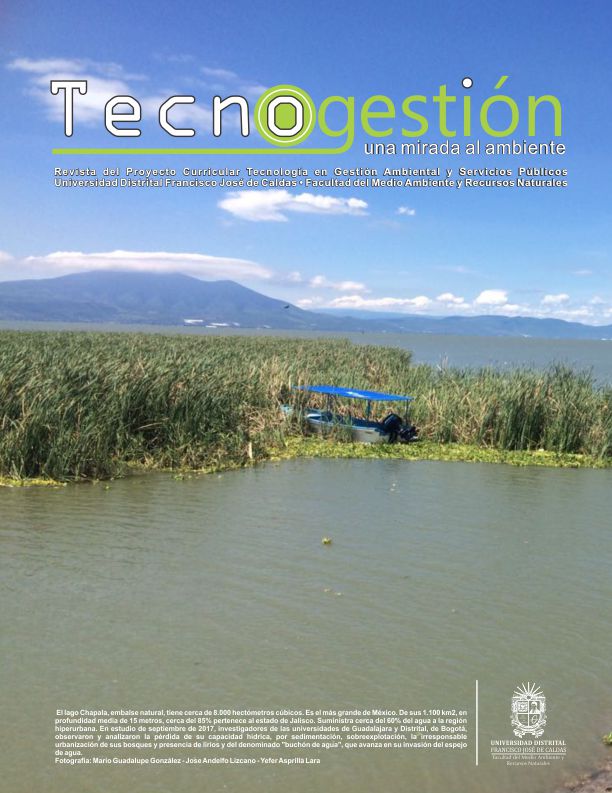Publicado:
2017-12-05Número:
Vol. 14 Núm. 1 (2017): TECNOGESTIÓN: UNA MIRADA AL AMBIENTESección:
Artículos de InvestigaciónTeachers´ construction of their professional self image while working in an autonomous learning setting.
Descargas
Resumen (en)
This article presents the results of a Research project which aims at exploring teachers' narratives regarding the construction of their professional self-image whilst working in an autonomous learning setting. This study was conducted in a public university in Boyacá Colombia, with a sample of four full time teachers. The results of the study indicate that those who work in an autonomous learning setting construct their self-image throughout their professional lives; this process is the result of the impressions from their own teachers, their previous and current teaching experiences, and their expectations about the future. Likewise, the participants defined autonomy in accordance with their reality at the Language Institute as follows: Firstly, as a utopian possibility for teachers, due to the very restricted scope to propose, make choices and act freely in academic activities. Secondly, as a real happening, possible to occur in external contexts when conducting research and attending conferences.Referencias
Ariza, A. (2004). EFL undergraduate students understanding of autonomy and their reflection in their learning process. Unpublished Master's thesis. Bogotá, Colombia: Universidad Distrital Francisco José deCaldas.
Basturkmen, H. Loewen,S& Ellis, R. (2004). Teachers' stated beliefs about incidental focus on form and their classroom practices. Applied Linguistics, 25, (2) 243-70.
Beijaard, D. Verloop, N. &Vermunt, J. (2000). Teachers' perceptions of professional identity: an exploratory study from a personal knowledge perspective. Teaching and Teacher Education, 16, (1) 749- 764.
Bell, J. (1993). Doing your research project. Buckingham, Philadelphia: Open University Press.
Benson, P. (2001). Teaching and researching Autonomy in Language Learning. London, England: Pearson Education Limited.
Burns (1999) Collaborative Action Research for English Language Teachers. United Kingdom: Cambridge University Press.
Cardenas, R. (2006). Considerations of the role of teacher autonomy in the promotion of student autonomy. Colombian Applied Linguistics Journal, 11 (8) 183-202.
Castellanos, J. (2005). Preservice Teachers' Construction of Self-Image as Teachers, Unpublished Master's thesis. Bogotá, Colombia: Universidad Distrital Francisco José de Caldas.
Cerda, H. (2002) Los elementos de la investigación. Bogotá, Colombia: El búho LTDA.
Clavijo, A. (2000) Formación de docentes, historia y vida. Bogotá, Colombia. Plaza y Janes Editores.
Day, C. Kington, A. Stobart, G. & Sammons P. (2006). The personal and professional selves of teachers: stable and unstable identities. British Educational Research Journal 33 (4), 601-616.
Fandino, Y. (2009). A pathway to Teacher and Learner Autonomy: A study on socio affectiveLearning Strategies. Investigación en el aula en L1 y L2 estudios, experiencias y reflexiones.Bogotá, Colombia: Universidad Nacional de Colombia.
Teachers´ construction of their professional self-image while working in an autonomous learning setting.
Gualdron, L. & Reyes, L. (1999). La identidad del docente. Bucaramanga, Colombia: Ediciones UIS.
Jhonson, K. &Colombek, P. (2002). Teachers' narrative inquiry as professional development. United States: Cambridge University Press.
Little, D. (2001). Learner autonomy and human interdependence: Some Theoretical and Practical Consequences of a Social-interactive View of Cognition, Learning and Language. In Sinclair, B. McGrath, I & Lamb, T Learner Autonomy, Teacher Autonomy: Further Directions.London, England:Pearson Education Limited.
Luna, M. & Sánchez, D. (2005). Profiles of Autonomy in the Field of Foreign Languages. Profile, 6 (1)133-140.
Merriam, S. (1991). Case study research in education. A qualitative approach. San Francisco, United States: Oxford.
Merriam, S. (1998). Qualitative Research and Case Studies Applications in Education. San Francisco, United States: Jossey-Bass.
Moreno, E. (2007). Exploring the relation between experiences in language learning and the beliefs that underpin the teaching practice of three English teachers. Unpublished Master's thesis. Tunja, Colombia: Universidad Pedagógica y Tecnológica de Colombia.
Moreno, M (2001). El profesor universitario de matemáticas: Estudio de las concepciones y creencias acerca de las ecuaciones diferenciales: Estudios de caso.Unpublished Master's thesis. Spain:Universidad de Leida.
Posada, J. & Patino, L. (2007). A study of the English Teaching Practice at a Language Institute. Colombian Applied Linguistics Journal, 9 (2) 126-143.
Quintana, J (2001) Las creencias y la educación.Barcelona, Spain: Herder.
Ramos, B. (2008) Teachers' self-image in an autonomous learning setting ASOCOPI Newsletter. Reglamento de Funcionamiento del Instituto de Idiomas de la UPTC (2007).
Seliger, H. &Scholamy, E. (1989) Second languageresearchmethods.Oxford, UK: Oxford University Press.
Shek, D. (2004). Chinese cultural beliefs about adversity its relationship to psychological well-being, school adjustment and problem behavior in Hong Kong adolescents with and without economic disadvantage. Childhood A global journal of child research. 11 (1), 63-80.
Usma, J. & Orrego, L. (2009). La autonomía del estudiante y del profesor en estudios de investigación: hallazgos y retos desde la Universidad de Antioquia. In Investigación en el aula en L1 y L2 estudios, experiencias y reflexiones. Bogotá, Colombia: Universidad Nacional de Colombia.
William, M & Burden, R. (1999). The contribution of the individual student to the learning process. Psychology for Language Teachers: A social constructivism approach. Cambridge, UK: CambridgeUniversity Press.
Cómo citar
APA
ACM
ACS
ABNT
Chicago
Harvard
IEEE
MLA
Turabian
Vancouver
Descargar cita
Visitas
Descargas
Licencia
Tecnogestión esta bajo una licencia Creative Commons - 4.0 Colombia License.
Atribución - No Comercial - Sin Derivadas

